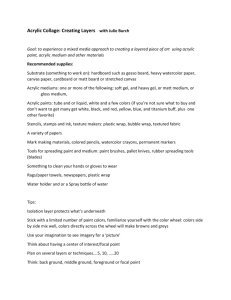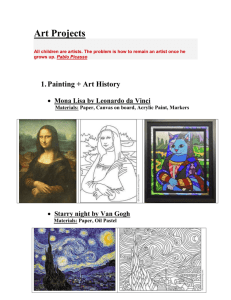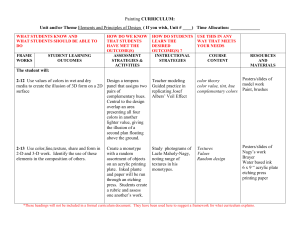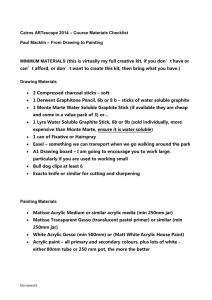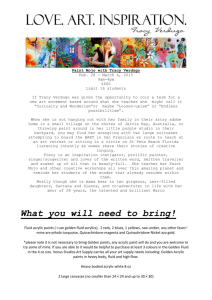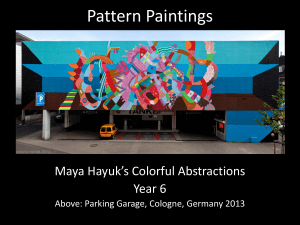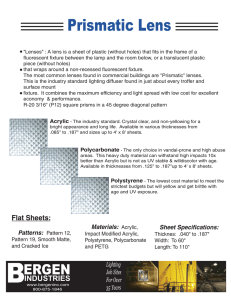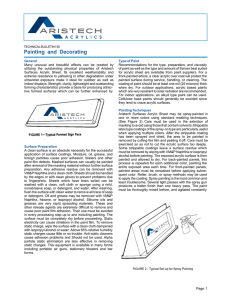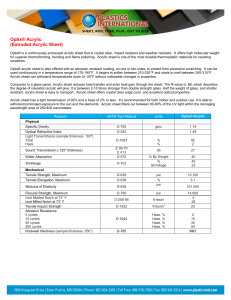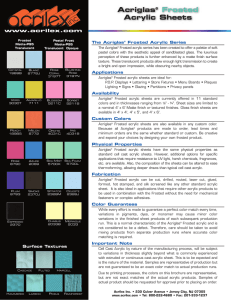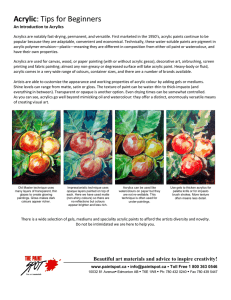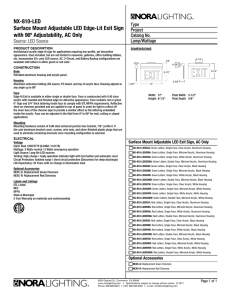WOODLAND HILLS SECONDARY LESSON PLAN
advertisement
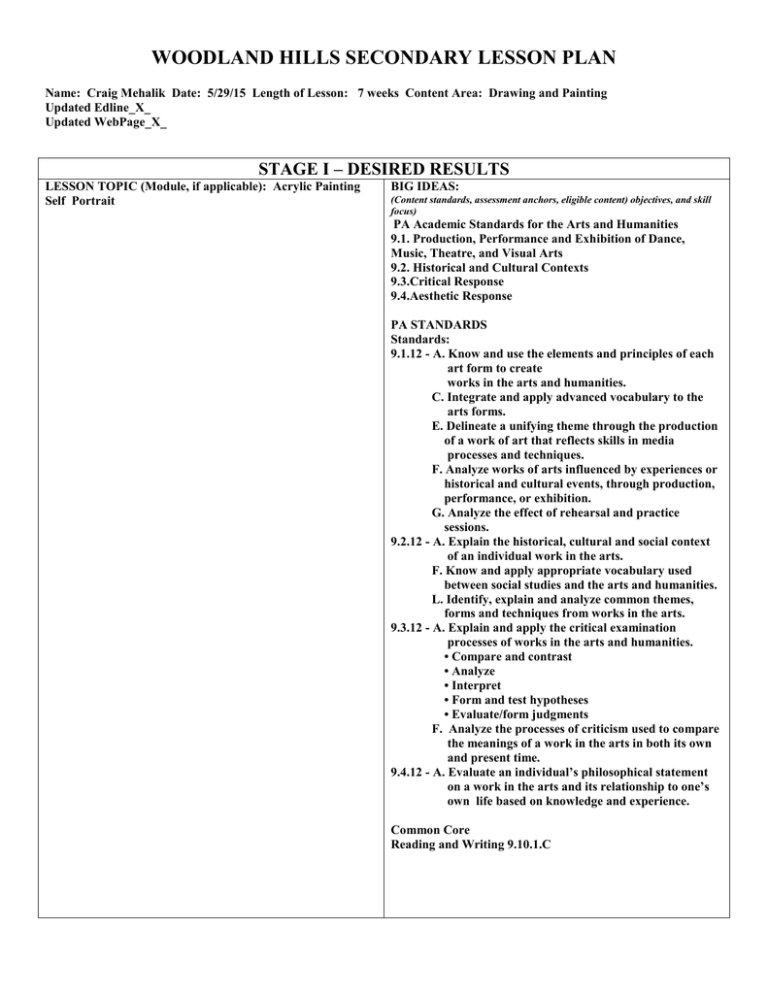
WOODLAND HILLS SECONDARY LESSON PLAN Name: Craig Mehalik Date: 5/29/15 Length of Lesson: 7 weeks Content Area: Drawing and Painting Updated Edline_X_ Updated WebPage_X_ STAGE I – DESIRED RESULTS LESSON TOPIC (Module, if applicable): Acrylic Painting Self Portrait BIG IDEAS: (Content standards, assessment anchors, eligible content) objectives, and skill focus) PA Academic Standards for the Arts and Humanities 9.1. Production, Performance and Exhibition of Dance, Music, Theatre, and Visual Arts 9.2. Historical and Cultural Contexts 9.3.Critical Response 9.4.Aesthetic Response PA STANDARDS Standards: 9.1.12 - A. Know and use the elements and principles of each art form to create works in the arts and humanities. C. Integrate and apply advanced vocabulary to the arts forms. E. Delineate a unifying theme through the production of a work of art that reflects skills in media processes and techniques. F. Analyze works of arts influenced by experiences or historical and cultural events, through production, performance, or exhibition. G. Analyze the effect of rehearsal and practice sessions. 9.2.12 - A. Explain the historical, cultural and social context of an individual work in the arts. F. Know and apply appropriate vocabulary used between social studies and the arts and humanities. L. Identify, explain and analyze common themes, forms and techniques from works in the arts. 9.3.12 - A. Explain and apply the critical examination processes of works in the arts and humanities. • Compare and contrast • Analyze • Interpret • Form and test hypotheses • Evaluate/form judgments F. Analyze the processes of criticism used to compare the meanings of a work in the arts in both its own and present time. 9.4.12 - A. Evaluate an individual’s philosophical statement on a work in the arts and its relationship to one’s own life based on knowledge and experience. Common Core Reading and Writing 9.10.1.C UNDERSTANDING GOALS (CONCEPTS): Students will understand: demonstrate understanding of proper processes and techniques to complete a detailed color study of a non-traditional self portrait in acrylic paint. Demonstrate understanding of color theory and color blending to create depth, shadow and highlights. ESSENTIAL QUESTIONS: Higher thinking process. Art Criticism: Describe, Analyze, Interpret and Judge. VOCABULARY: Composition, Strong Diagonal, Acrylic Paint, Value, Shadow, Highlight, Midtone, Gradation, Background, Environment, Positive and Negative Space, Void Space, Warm Colors, Cool Colors, Blending, Directional Mark Making, Complementary Colors. STUDENT OBJECTIVES (COMPETENCIES/OUTCOMES): Students will be able to: Create a color study of a non-traditional self portrait in acrylic paint. Students will begin lightly drawing objects using contour line technique and adding color using blending and directional mark making techniques. Students will practice with the media to gain understanding of above techniques. STAGE II – ASSESSMENT EVIDENCE PERFORMANCE TASK: Model correct processes/Guided Practices/Check for Understanding. Planning/Reflection, Craft, Creativity, Effort, Time Management. Project. FORMATIVE ASSESSMENTS: Visual representation, Adhering to discussion and demonstration, Visual aids, Informational readings, Measuring Skills and tools applied when appropriate, summarize and reflect, rubric for technique, written student evaluation and skill-mastered, works in progress are daily and on-going interviews, selfevident product through student work STAGE III: LEARNING PLAN INSTRUCTIONAL PROCEDURES: MATERIALS AND RESOURCES: Do Now Mini Lesson: Guided Practice: Independent Practice: Summations/Formative Assessments: Reflections: Examples, canvas board, acrylic paint and brushes, zip lock gallon bags, foam plates/palettes. Review project criteria. Discuss proper processes and techniques to complete a detailed color study of a nontraditional self portrait from contour line through media of acrylic paint. Demo processes/Guided Practices/Check for Understanding. Elements and Principles of Design Do Now-Mini Art History Lesson. ID and write a minimum of five lines about different works of art. Classroom routines and independent work on projects Reflection daily and at conclusion of project following process and techniques of lesson. Electronic devices/Cell Phones with Teacher's permission/descretion. Vincent van Gogh and Pablo Picasso Scholastic Magazines INTERVENTIONS: ASSIGNMENTS: Individual Instruction, Extra Time, Group Review, Modeling Daily participation grade based on Art Department Classroom Expectations Do Nows Reading/Writing Activities Art Criticism Projects Discussions Critiques Evaluation/Reflection
